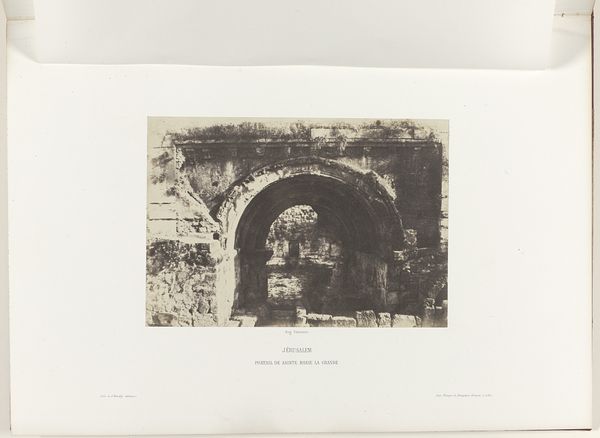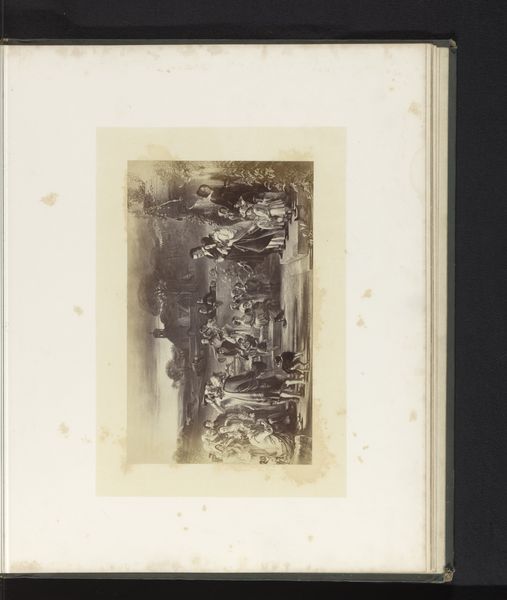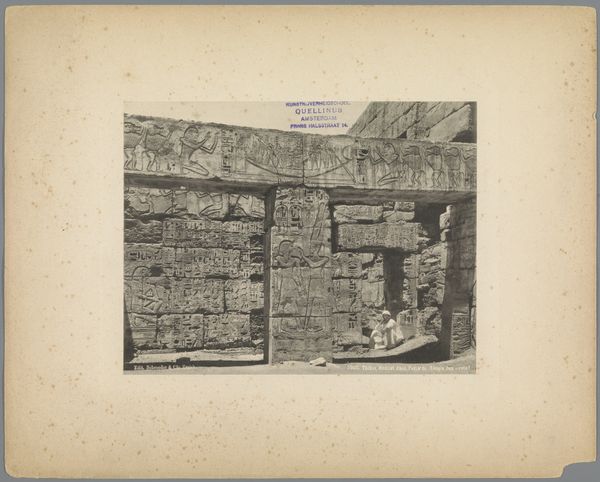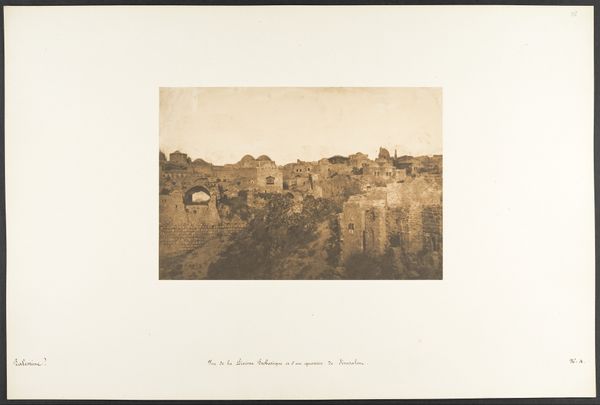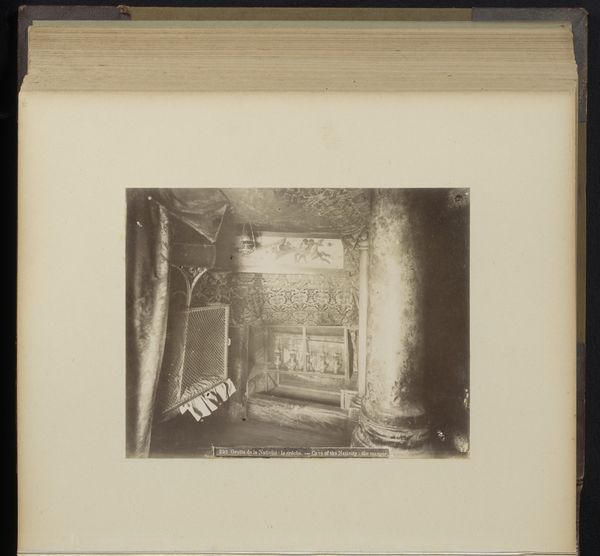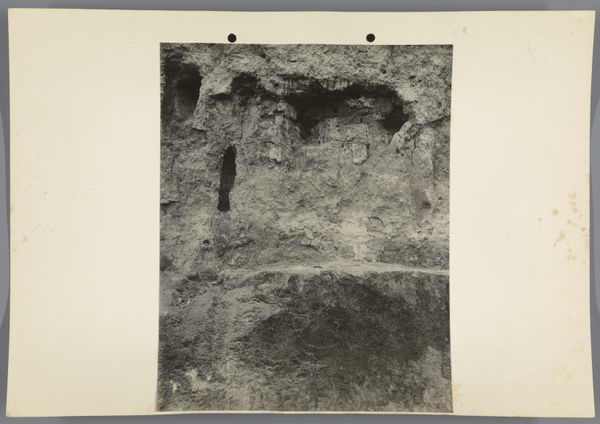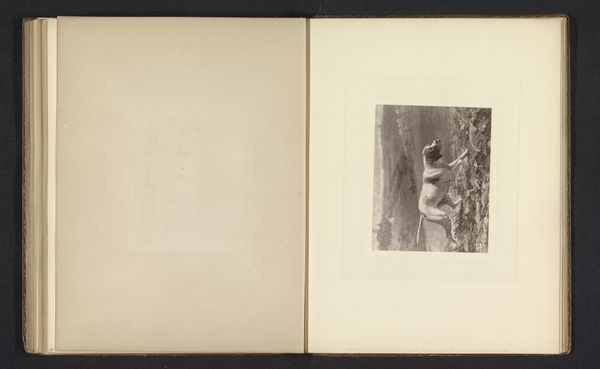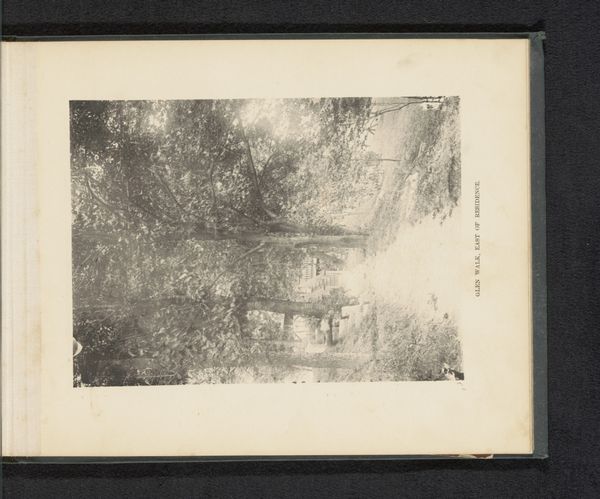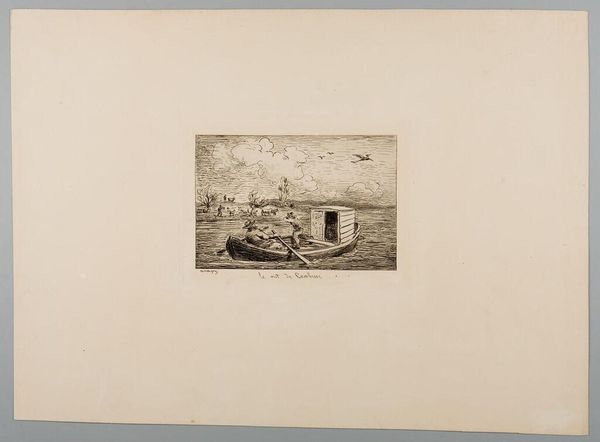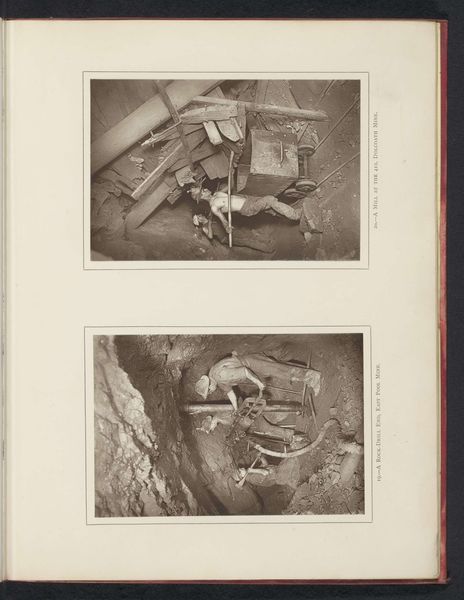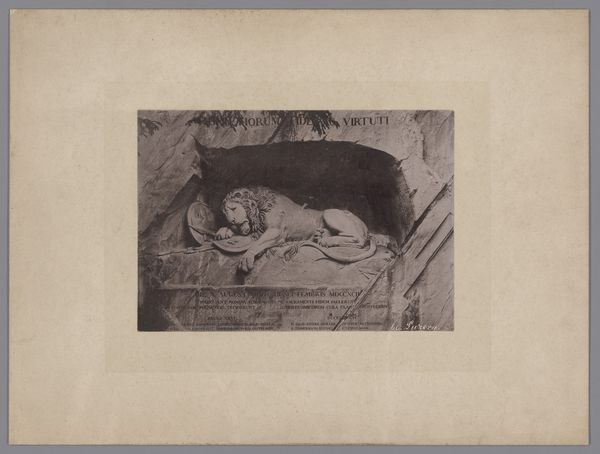
Proseynème scellé dans le second Pylone du Temple d'Isis, à Philae 1850
0:00
0:00
print, daguerreotype, photography, architecture
# print
#
landscape
#
daguerreotype
#
ancient-egyptian-art
#
photography
#
architecture
Dimensions: Image: 6 7/16 × 8 9/16 in. (16.4 × 21.8 cm) Mount: 12 5/16 × 18 11/16 in. (31.2 × 47.5 cm)
Copyright: Public Domain
Editor: So this daguerreotype, taken in 1850 by Maxime Du Camp, is titled "Proseynème scellé dans le second Pylone du Temple d'Isis, à Philae" – roughly translated, "Proseyneme sealed in the second Pylon of the Temple of Isis, at Philae." It feels intensely heavy, weighted down by history, I suppose. All those hieroglyphs practically shout from the stone, even in sepia tones. What catches your eye when you look at it? Curator: It whispers stories to me, that’s what. It’s more than just stone and symbols, it's like Du Camp somehow bottled the *idea* of ancient Egypt, its endurance and mystery. This particular temple, dedicated to Isis, was a center of cultic importance, drawing pilgrims for centuries. Look at how Du Camp has framed the inscription – almost reverently. What does it mean to preserve something like this through photography, you know? Capture something intangible, then make it real. Editor: I do. It makes you wonder about time and impermanence, doesn’t it? Was Du Camp thinking about that when he shot this, or was he more focused on the technical challenge of photography in such a setting? Curator: Maybe both! I like to imagine him squinting through the lens, sweat beading on his forehead in that brutal Egyptian sun, both a technician and a bit of a poet. Think of the technical skill in lugging equipment across continents just to frame *this* image. And, perhaps he's musing about our attempts to freeze moments, the futility, but also the stubborn beauty of that act. Did the picture fulfill its intended purpose? Editor: Absolutely. Before this, I wouldn't have considered photography a form of preservation with that much...feeling. It’s kind of haunting. Thanks! Curator: Anytime. Perhaps all artistic creations serve as a type of memory palace? They invite contemplation, you know.
Comments
No comments
Be the first to comment and join the conversation on the ultimate creative platform.

